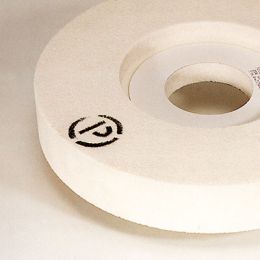Flat grinding
During circumferential grinding, chipping is mostly done by the grains at the circumference. Contact length is small, so that the chip chambers of the grinding wheel are scarcely fully pressed and easily clean also due to the centrifugal force and the pressure of the cooling lubricant. Diameter and breadth of the wheel are to be selected as large as possible, in order to involve into chipping as much grinding grains as possible. Ideally, the breadth of the wheel corresponds to the breadth of the workpiece. Crosswise feed is to amount to 1/2 up to 4/5 of the wheel’s breadth. Small cutting depth in connection with a large crosswise feed effect that all grains are involved into the circumference and the grinding work. This allows avoidance of strong edge wear and large local heating. Circumferential grinding is especially economic, if work is done with grinding wheels as large as possible and large crosswise feed.

| Measurements | Usual measurements for flat grinding (principally, all measurements are possible): 175x12x32, 175x16x32 175x20x32 (recess 90/8) 225x20x51, 225x25x51, 250x25x51 300x50x76 (recess 155/10/18) 350x50x127, 400x30x127, 400x50x127 400x80x127 (recess 200/20/20) 400x100x127 (recess 200/20/30) |
|---|---|
| Specifications | For universal application of steel of altering quality and hardness: EKW46/8V, EKW46J8V, HEK46J8V For high alloyed, hardened steel up to 63 HRC: EKK46H8V, SGK46HVX For diaform flat profile wheels: EKW80/1H6V, EKW120H7V |











